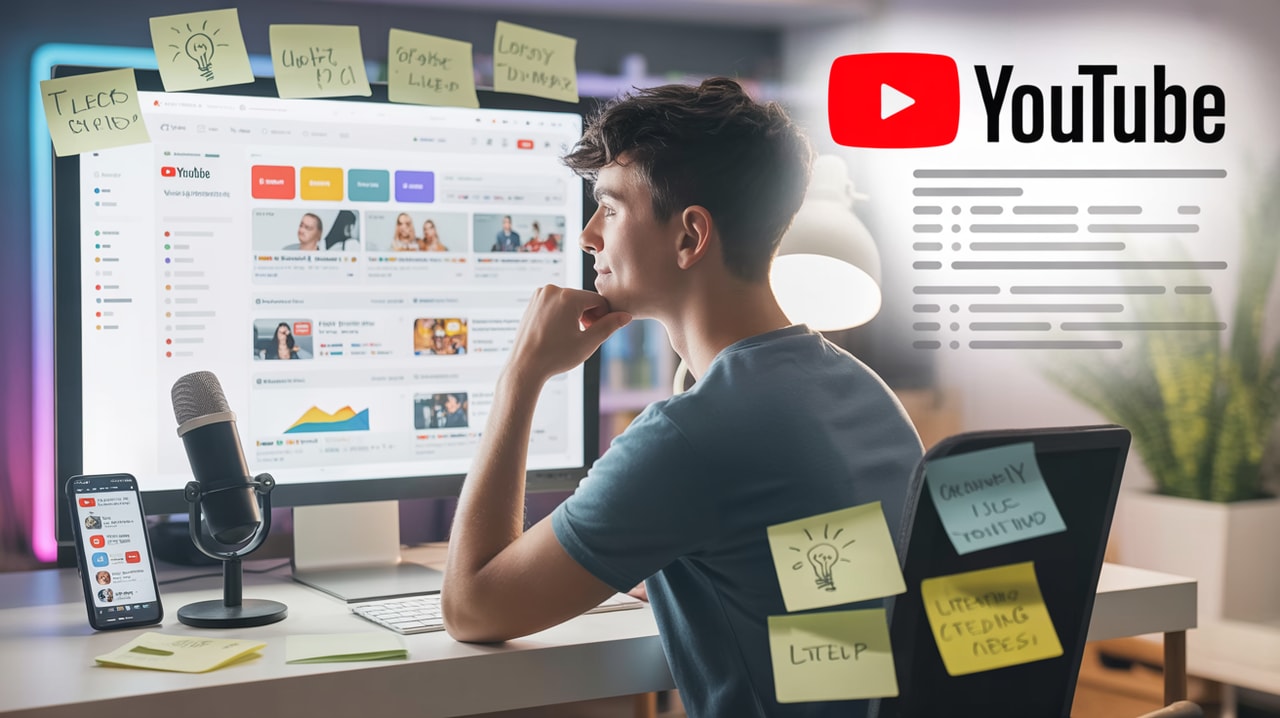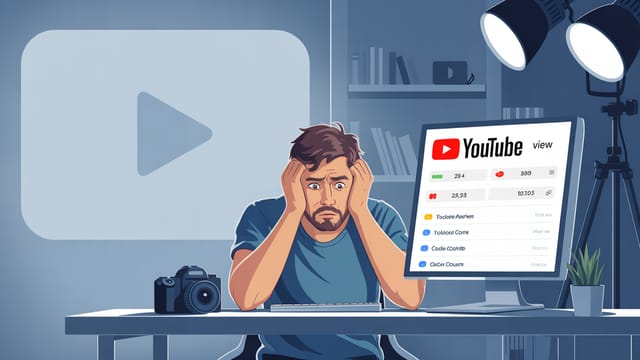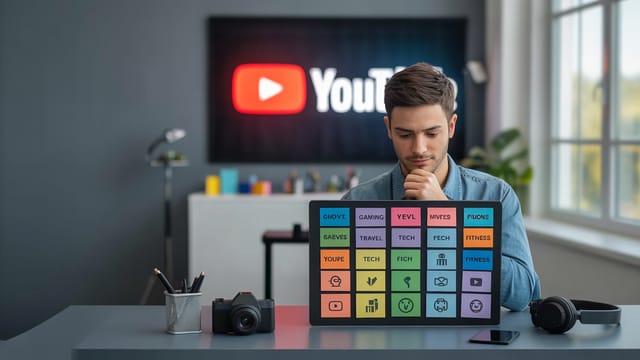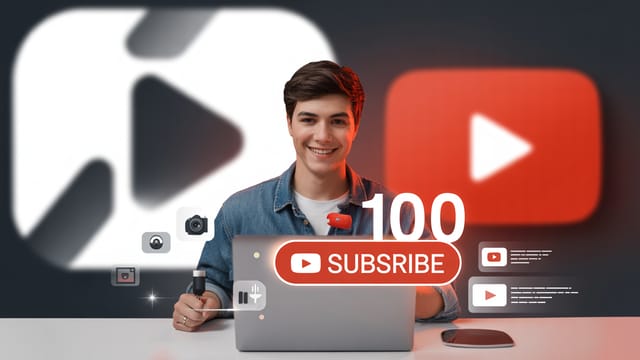
Ready to get your next 10,000 subscribers?
Join thousands of creators who use Subscribr to create faster, better YouTube videos.
How to Find Video Ideas Your Audience Actually Wants (New Channels)
Starting a YouTube channel is exciting, but quickly runs into a major challenge: consistently coming up with video ideas your target audience actually cares about. You're putting in the effort to film and edit, but if the ideas miss the mark, you'll struggle to get those crucial initial views and subscribers. This isn't just frustrating; it's a significant barrier to growth and eventually, monetization.
Many new creators fall into the trap of making videos they think people want, or simply copying what huge channels are doing. But for a channel with 0-1000 subscribers, you need a more strategic approach. You need to move beyond guesswork and use data to find out what your specific audience is actively searching for and interested in.
This article will show you how to use proven research methods to uncover video ideas that resonate, helping you build a sustainable content plan and gain that all-important initial traction.
Why Your First Video Ideas Are So Important
When you're just starting out, every single video is an opportunity to be discovered. Unlike established channels that have a base of subscribers who will likely watch new uploads, your videos need to attract viewers from YouTube search, suggested videos, and other discovery features.
This means your video ideas need to directly address a need, answer a question, or entertain a specific group of people who don't already know you. Creating content that aligns with what your target audience is already looking for is the most effective way to get those first few hundred, or even thousand, views. These early views and the engagement they bring signal to YouTube that your content is valuable, leading to more impressions and growth. It's the foundation for building an audience and eventually unlocking monetization opportunities.
Moving Beyond Guesswork: The Data-Driven Approach to Ideation
Instead of brainstorming in a vacuum, successful new YouTubers use data to inform their content strategy. This doesn't mean getting bogged down in complex analytics from day one, but rather using simple observation and readily available tools to understand audience demand.
The core principle is to analyze what content is already performing well for similar audiences, especially on channels that are closer to your current size or slightly larger. This reveals topics and formats that have a proven audience appetite.
Here are a few key methods to implement:
Method 1: Reverse-Engineering Success on Established Channels
One of the quickest ways to identify topics that resonate in your niche is to look at what's already popular on successful channels.
How to do it:
- Go to the YouTube channel of a creator in your niche who has significantly more subscribers than you, but whose content feels relevant to the audience you want to reach.
- Click on their "Videos" tab.
- Sort their videos by "Most popular".
This view immediately shows you the topics and video angles that have attracted the most viewers over the channel's lifetime. These are proven winners within that niche.
What to look for:
- Recurring topics: Do certain themes or types of videos appear repeatedly in their most popular list?
- Specific questions answered: Are their popular videos often tutorials, guides, or explanations addressing common problems?
- Formats: Are the popular videos vlogs, listicles, deep dives, short tutorials, etc.?
For example, if you're starting a beginner cooking channel, looking at a channel like @Kenna's Kitchen (33.6K subscribers) and sorting by popular might reveal that simple, quick recipes or tutorials on basic techniques perform very well. This suggests that new cooks are actively searching for easy-to-follow guides.
Important Consideration: While this method reveals proven demand, directly copying the most popular videos from massive channels might be difficult for a new channel to rank against. Use this as inspiration to identify broad topics and angles, then use the next methods to find your unique angle or underserved sub-topics within that theme.
Method 2: Discovering Undersaturated Topics & Emerging Trends (The Small Channel Method)
This is perhaps the most powerful strategy for new channels. Instead of competing with giants, look for topics that are performing exceptionally well on channels similar in size to yours, or slightly larger (say, under 50k subscribers).
How to do it:
- Use YouTube's search bar and search for broad topics within your niche.
- Instead of just looking at the top results (which are often dominated by large channels), actively look for videos from smaller creators that have an unusually high number of views relative to their subscriber count.
- Alternatively, use tools like Subscribr's channel analysis features to help identify channels in your target subscriber range and analyze their video performance metrics, including outlier scores. Videos with high outlier scores on small channels are prime candidates.
Why this works:
When a video on a small channel gets significantly more views than the channel's typical average, it's a strong signal that the topic itself is highly interesting to the audience, independent of the creator's existing reach. This suggests the topic is either:
- An emerging trend that larger channels haven't fully capitalized on yet.
- An underserved niche or question within a broader topic.
- Something that resonates deeply with a specific segment of the audience.
Finding these "outlier" videos on small channels can help you identify high-demand topics where you have a better chance of ranking and getting discovered, even without a large subscriber base. For instance, a video like REALLY DELICIOUS, just flour and milk 1 egg ‼️ Just stir, easy for beginners without a mixer. on Nabilah Kitchen (which has over 500k views with under 100k subscribers) suggests that extremely simple, minimal-ingredient recipes for beginners are a highly sought-after topic.
Method 3: Combining Audience Search Intent and Proven Concepts
Understanding what questions people are typing into the YouTube search bar is fundamental to creating content that gets discovered.
How to do it:
- Start typing a broad topic related to your niche into the YouTube search bar. Pay close attention to the autocomplete suggestions that appear. These suggestions are based on actual search queries from users.
- Use these suggestions to refine your topic ideas. For example, if you type "beginner cooking," you might see suggestions like "beginner cooking recipes," "beginner cooking techniques," "beginner cooking mistakes to avoid," etc.
- Take these search queries and look for videos (especially those from smaller to medium-sized channels) that rank for them and have decent view counts.
- Subscribr's Research Assistant can help streamline this process by providing integrated web and YouTube search capabilities, allowing you to explore search queries and analyze relevant videos within the platform as you brainstorm.
Putting it together:
Combine the insights from methods 1, 2, and 3.
- Use Method 1 to identify broad, proven topics in your niche.
- Use Method 3 (YouTube search autocomplete) to see how audiences are searching for information within those topics.
- Use Method 2 to find specific angles or sub-topics within those broad themes that are overperforming on smaller channels, indicating a potential gap or emerging interest.
This combined approach helps you find ideas that have demonstrated audience demand and where you have a realistic chance of ranking as a new channel.
The "Ideas Business": Dedicate Time to Research
Finding great video ideas isn't a passive activity; it's a core part of the content creation process that requires dedicated time and effort. Think of it as the "ideas business" that fuels your YouTube channel.
Set aside specific time each week solely for research and idea generation. This could be an hour or two where you're exploring channels, using search tools, and analyzing what's working. The quality of your ideas will directly impact the performance of your videos, so this time is an investment, not a cost.
Platforms like Subscribr are designed to make this research phase more efficient, bringing together the tools you need to analyze channels, research topics, and organize your findings in one place.
Building Your Initial Content Plan
Once you've gathered a list of potential video ideas using these methods, it's time to refine them and build your initial content plan. For new channels, focusing on your first 12-20 video ideas is a good starting point. This gives you enough runway to establish a consistent upload schedule and gather some initial performance data.
When selecting your first ideas from your research, prioritize those that:
- Directly address a clear search query or problem your target audience has.
- Show evidence of performing well on smaller channels (high views relative to subscribers).
- Align with your unique skills, perspective, or resources. You need to be able to create a high-quality video on the topic.
Don't try to cover everything at once. Focus on a few related themes or topics to start. This helps YouTube understand what your channel is about and makes it easier to attract a consistent audience interested in that specific content.
Refining Ideas Based on Early Performance
As you start publishing videos, pay close attention to their performance in YouTube Analytics. Look at metrics like:
- Views: How many people are watching?
- Watch Time: How long are people watching your videos?
- Audience Retention: Where are viewers dropping off?
- Traffic Sources: Where are viewers finding your videos (search, suggested, etc.)?
Analyze which of your initial videos are performing best and try to understand why. Is it the topic, the title, the thumbnail, the way you structured the video? Use these insights to refine your future video ideas and double down on what's working for your specific audience. Subscribr's channel and video intelligence features can help you analyze these metrics and identify patterns in your own content's performance.
Tools & Resources for Idea Generation
Leveraging the right tools can significantly streamline your idea generation process. While YouTube Studio and YouTube Analytics are essential for tracking your own performance, platforms like Subscribr offer integrated features designed specifically for creator research and planning.
Subscribr's comprehensive platform includes:
- Research Assistant: Import content from the web, analyze YouTube transcripts, and get AI-powered research summaries to inform your ideas.
- Channel and Video Intelligence: Analyze the performance of channels and individual videos in your niche, helping you identify popular topics and overperforming content on smaller channels (outliers).
- AI Chat: Brainstorm ideas and get real-time feedback from an AI that understands your channel and audience.
- Script Building Pipeline: Take your researched ideas and turn them into structured outlines and complete scripts with AI assistance.
Using a platform like Subscribr can help ensure your ideation process is data-driven and efficient, freeing up more time for creating great content.
Conclusion
Finding video ideas that your audience actually wants is the critical first step to getting traction as a new YouTube channel. Stop guessing and start researching. By analyzing what's already performing well on both large and small channels in your niche, paying attention to audience search intent, and dedicating consistent time to ideation, you can build a content plan that resonates.
Focus on creating high-value videos around these validated ideas. As you publish, use your own performance data to refine your understanding of what your audience loves. This data-driven approach to content ideation will not only help you overcome the initial struggle for views and subscribers but also set a strong foundation for sustainable growth and future monetization on YouTube.





